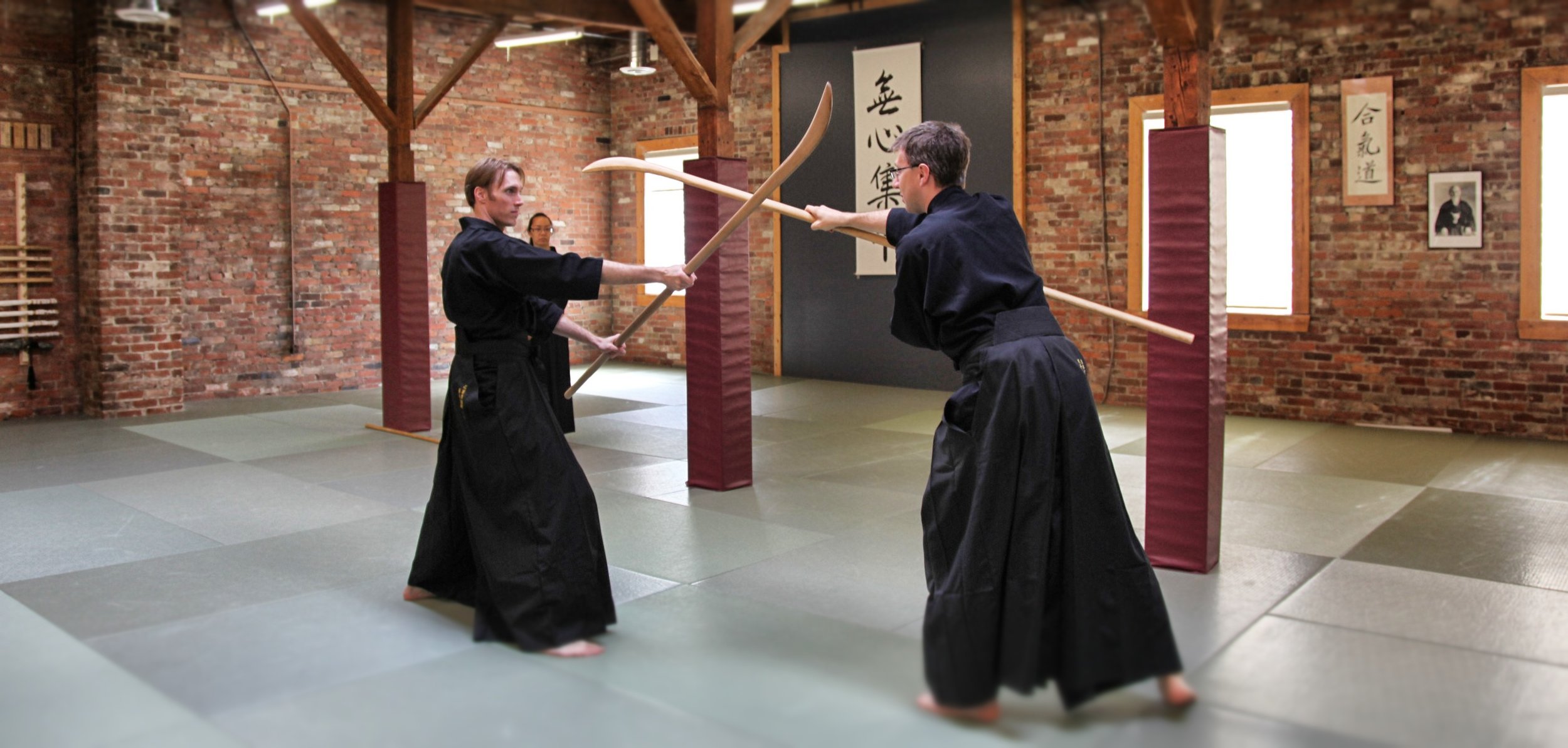About Kenjutsu
剣術 (kenjutsu) literally means “sword technique” or “sword art” and refers to the Japanese warrior arts which were created and developed during feudal Japan. A traditional school of kenjutsu is where samurai were taught the use of classical Japanese weapons for both individual confrontations and during battlefield combat. Students were also taught the appropriate conduct (etiquette) which served the dual purposes of helping to ensure the safety of their respective daimyo (feudal lord) and also allow the samurai to function appropriately in noble society.
Ottawa Kenjtusu teaches the Heart Reflection Style of kenjutsu. This style refers to reading and understanding an opponent’s intention and creating a response in the opponent which can be countered. The style was founded 450 years ago, during the Sengoku Jidai (warring states period), a time when most of Japan was embroiled in constant warfare. As such, the traditions, customs and techniques are reflective of this period. At Ottawa Kenjutsu, we strive to follow traditional techniques and continue the preservation of this classical Japanese sword art.
Jeremy DeMan, the instructor at Ottawa Kenjutsu, has been teaching kenjutsu to students in the Ottawa and Gatineau area since 2011.
Curriculum
While the study of kenjutsu focuses predominantly on the Japanese sword, the Heart Reflection Style also includes training and techniques for other classical Japanese weapons. Ottawa Kenjutsu therefore provides instruction in the following arts:
Kenjutsu 剣術 – all aspects relating to the art of the sword which are trained using bokken, fukuro shinai, and katana. Kenjutsu also includes techniques using a sword in one hand and a wakizashi (short sword) in the other.
Iaijutsu 居合術 - techniques for drawing the sword and cutting with one instantaneous movement. The emphasis is on first performing the movements safely, then learning to draw and cut with precision at a fast speed.
Naginatajutsu 長刀術 - techniques using a pole mounted with a long blade. Movements involve using both ends of the weapon, keeping opponents at a distance and various spinning techniques.
Jujutsu 柔術 and Tantojutsu 短刀術 - the art of using empty hand techniques including joint locks, kicks, strikes, and breaking an opponent's grip. These techniques are also trained in connection with tanto (a short blade) and fan.
Sojutsu 槍術 - techniques using a yari (spear) with blades on both ends. The movements involve using both ends in fluid, dynamic techniques which were historically used to defeat individual or multiple opponents.
Bojutsu 棒術 - techniques with various staff weapons, including a heavy octagonal staff (八角棒), and a long, thinner staff (硬棒) .
Jojutsu 杖術 - techniques with a short, flexible staff (haze-jo). The flexibility of the jo allows for circular movements and spinning techniques which keep the jo in constant movement.








